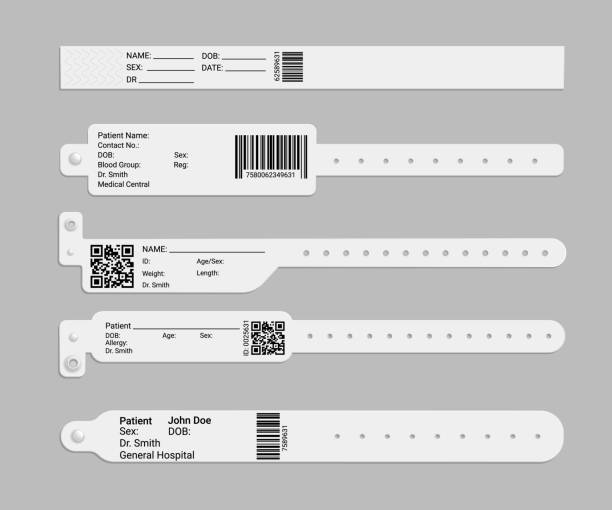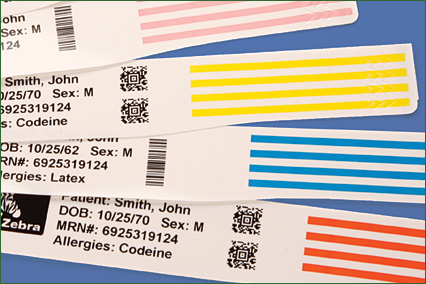Person Identification Bands: A Secret Tool for Improved Medical Precision
Client recognition bands represent an essential element in the search of medical precision and patient safety within healthcare environments. The real extent of their effect on individual results and general health care quality warrants further assessment.

Value of Individual Recognition
Individual identification is an important element of healthcare that makes sure the safety and accuracy of medical treatment. Proper recognition methods are necessary to protect against medical errors, which can lead to unfavorable patient outcomes, consisting of inaccurate medication management, misdiagnosis, or unsuitable treatment strategies. The relevance of precise patient recognition can not be overstated, as it works as the foundation for reliable communication among medical care companies.
In settings where multiple people are obtaining therapy all at once, the threat of identity complication boosts. Implementing durable identification systems aids minimize these risks and boosts individual safety and security. Patient Identification Band. Additionally, exact recognition adds to the integrity of clinical records, making certain that individual backgrounds, allergies, and previous therapies are correctly connected to the right person.
Additionally, conformity with regulatory standards and certification requirements commonly mandates stringent client recognition methods, fostering a culture of liability and quality care. Eventually, the relevance of patient identification transcends simple management tasks; it is an essential facet of supplying top quality health care that focuses on person safety and improves medical results. Spending in reliable recognition techniques is not simply advantageous-- it's critical in today's complex healthcare landscape.
Types of Client Identification Bands
In medical care setups, different kinds of individual identification bands are used to guarantee precise identification and enhance safety. These bands work as a crucial tool in preventing medical errors associated with patient misidentification.
The most usual kind is the typical wristband, commonly constructed from long lasting plastic and printed with the patient's name, day of birth, and an one-of-a-kind recognition number. These wristbands are typically color-coded to convey specific details, such as allergies or other clinical conditions.
Another kind is the barcode wristband, which includes a scannable barcode connected to the patient's digital health and wellness record. This technology permits for effective data access and verification throughout medicine administration and various other medical procedures.
Furthermore, RFID (Superhigh Frequency Recognition) bands are ending up being increasingly prominent. These bands can communicate wirelessly with medical facility systems, permitting real-time monitoring and identification of individuals, thereby simplifying process and boosting individual safety.

Benefits for Doctor
Utilizing client identification bands offers substantial benefits for health care service providers, enhancing both functional efficiency and patient safety. These bands act as a critical device in improving patient monitoring processes (Patient Identification Band). By guaranteeing exact recognition, healthcare providers can lower the danger of administrative mistakes, such as mislabeling samples or misdirecting therapies, which can result in costly hold-ups and complications
In addition, client identification bands assist in seamless interaction among the health care team. With standardized and conveniently available person info, companies can make informed choices quickly, enhancing overall process. This effectiveness is specifically important in high-pressure settings such as emergency situation divisions, where time-sensitive interventions are essential.
The application of recognition bands also supports conformity with regulatory requirements and ideal techniques, thus decreasing the risk of legal consequences originating from identification errors. The use of these bands enhances data accuracy in digital wellness documents, leading to better care coordination and continuity.
Effect On Person Safety
Accurate client identification is a foundation of health care safety and security, significantly decreasing the possibility of errors that can endanger person health. Making use of person recognition bands is essential in guaranteeing that each client gets the right therapy, drugs, and procedures. These bands serve as a dependable reference point for healthcare specialists, decreasing the threat of misidentification, which can cause severe repercussions such as inaccurate drug administration great site or medical mistakes.
The application of standardized client recognition bands contributes to a society of safety within healthcare setups. By supplying clear, conveniently readable details, these bands aid to strengthen the importance of validating individual identity at every phase of treatment. They assist in communication amongst personnel participants, making sure that everyone entailed in a client's treatment is conscious of their details requirements and requirements.
Furthermore, using patient recognition bands can enhance the precision of electronic wellness records, additionally reducing the capacity for errors - Patient Identification Band. By focusing on patient security via efficient recognition practices, doctor can foster depend on and self-confidence among More Info individuals, inevitably resulting in far better clinical results and enhanced patient contentment. The impact of appropriate person identification can not be overstated; it is an essential component of top quality health care distribution
Best Practices for Implementation
Efficient application of individual recognition bands is vital for boosting person safety and security and decreasing mistakes in medical care setups. To accomplish this, health care organizations need to take on numerous finest methods. First, staff training is important; all staff member have to recognize the relevance of precise individual recognition and the treatments for band application. Normal training sessions and correspondence course can guarantee recurring compliance.
Second, the layout of the recognition bands should focus on visibility and longevity. Bands should be easy to check out, include crucial individual information, and hold up against daily wear. Making use of color-coding can even more boost quick recognition.


Third, incorporating digital wellness records (EHR) with recognition band systems can enhance workflow. Automated signals for disparities in client recognition can stop potential mistakes before they take place.
Finally, conducting routine audits and feedback sessions will certainly help determine areas for enhancement. Engaging personnel in these conversations promotes a society of safety and liability.
Conclusion
In final thought, individual recognition bands play a crucial role in improving clinical accuracy and making sure person security within health care systems. Embracing finest methods for implementation fosters a culture of safety, ultimately leading to improved client outcomes and better count on in healthcare solutions.
Individual recognition bands represent a vital element in the quest of medical accuracy and person safety and security within health care environments.Making use of client recognition bands uses significant benefits for healthcare service providers, improving both operational efficiency site here and person safety. By focusing on individual safety and security with efficient identification techniques, health care companies can foster trust fund and self-confidence among people, eventually leading to better professional results and improved person contentment.Effective application of client identification bands is crucial for improving patient security and minimizing mistakes in medical care setups.In conclusion, client recognition bands play a vital role in improving clinical precision and making certain patient safety within health care systems.
Comments on “Exactly How Patient Identification Band Lowers Threats in Patient Therapy and Treatment”